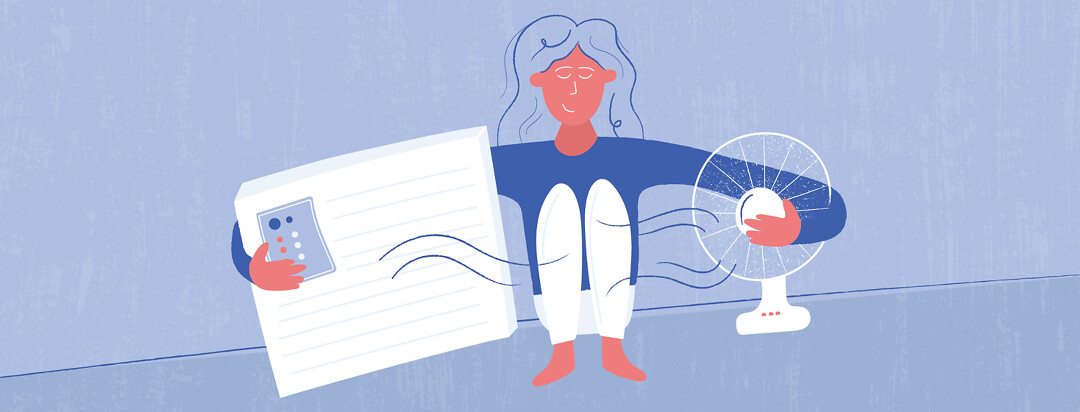I'm Hot Then I'm Cold: Managing Temperature With RLS
When you have restless legs syndrome (RLS), temperature can be an issue.
When you are menopausal, temperature can be an issue.
When you have both - well that’s just no fun at all.
I am no scientist so I cannot arguably say that one temperature is better than another, but for me personally, cooler is better than warmer. I am naturally a cold climate person so perhaps that is why. But regardless, if my restless legs get extra fidgety, cooling my legs down makes a big difference.
Air conditioner always on at night
Of a night, I always sleep with the air conditioner running - except for the very heart of winter when nature provides its own icy cool temperatures. Before I had aircon in my bedroom I used a fan and to be honest, in many ways that was much better.
The air flowing over my feet and legs as I dangled them outside the covers was refreshing and provided a momentary sense of relaxation in my twitchy muscles.
Staying comfortable at home and away
During the day I keep the house cool by having lots of airflow with open doors and windows. Or if the air temperature is too high, I turn all our air conditioners on and refrigerate the house. Then I put warm clothes on so I'm not too cold.
When I travel one of the first things I do is search for a fan. I promptly put it in the bedroom, right next to my side of the bed. I’m always afraid someone else will steal the fan, but in my group of travel companions, I seem to be the only one who wants it.
You will find me wrapped in a blanket in a cool room
As a menopausal woman – and I’m sad to say this has been going on for 10 years now – I am prone to being overheated. I take oestrogen which seems to settle rampant body heat changes but in general, I’m still warmer than I used to be. This doesn’t help RLS.
My most comfortable state of being is wrapped in snuggly blankets in an icy cold room. The cold air temperature seems to cool my blood (purely imaginary I’m sure) and consequently, my muscles feel more relaxed. Being wrapped in soft blankets is comforting. If I get hot or my RLS takes a turn for the worse, I release the overheated bits from under the blankets and leave the rest snug and warm.
I do this even in the heat of summer. Especially in the heat of summer! My house is like an icebox.
My body temperature has never felt well regulated
This does bring about a level of conflict with my husband who would much rather sit at room temperature than search for blankets mid-summer. But as a man, he seems to regulate body temperature better. My body temperature has never felt well regulated.
Now don’t get me wrong - I don’t like feeling cold. I don’t like it one little bit. But feeling hot is much worse for me. I often find that one minute I’m too hot and the next minute I’m too cold.
Warming up is easier than cooling down
I think I prefer cooler climates and cold room temperatures because it’s much easier (in my opinion) to warm up than it is to cool down.
If I start to feel cold I can wrap blankets and warm clothing around me. Once I start to feel hot again, I can strip them away. If I’m still hot when they’re stripped away, what then? The only option is cooling down with aircon. Which brings me full circle.
Lifestyle management
To manage my restless legs syndrome, especially concurrently with menopause, I stay as cool as possible. I let my toes tingle a little with the cold. I wrap a blanket around my torso and let my legs stay cool. If it’s hot weather and I can’t cool the air, I’ll try to cool myself from the inside out with plenty of cold water.
In really hot climates, I’ve been known to have a cold shower in the middle of the night then lie stark naked on the bed without drying any water off. It’s an effective strategy but perhaps not so practical when traveling with friends. Those are the times when a wet face cloth comes in handy.
Managing my body temperature and the air temperature around me has become an important lifestyle management strategy for my restless legs syndrome. Never too hot, never too cold.
Interested in reading more about lifestyle changes for symptom relief? Explore our featured collection on lifestyle changes and alternative treatments for RLS.

Join the conversation